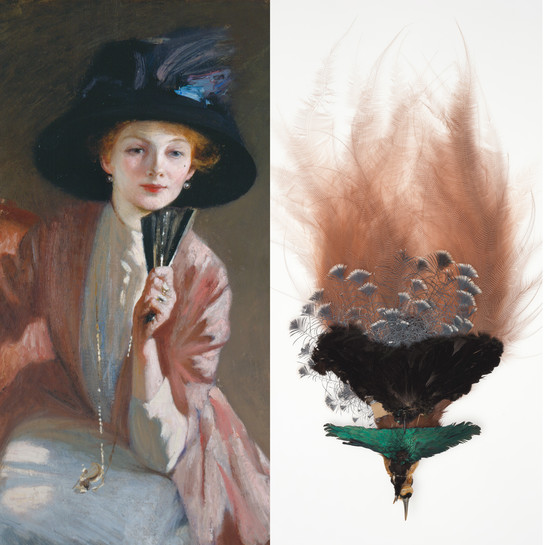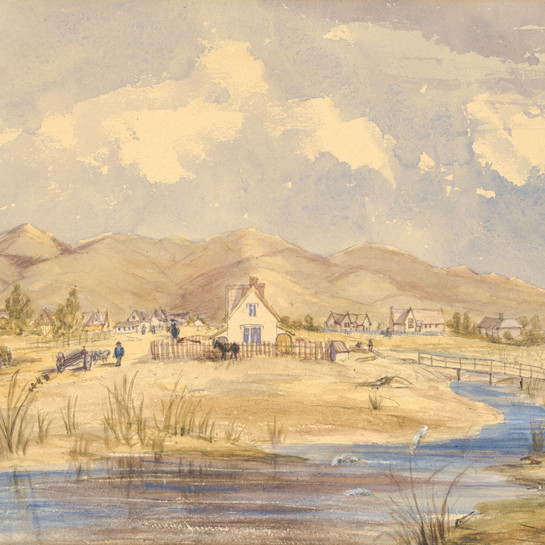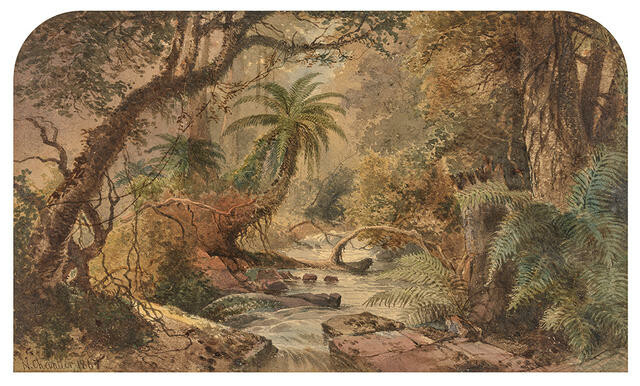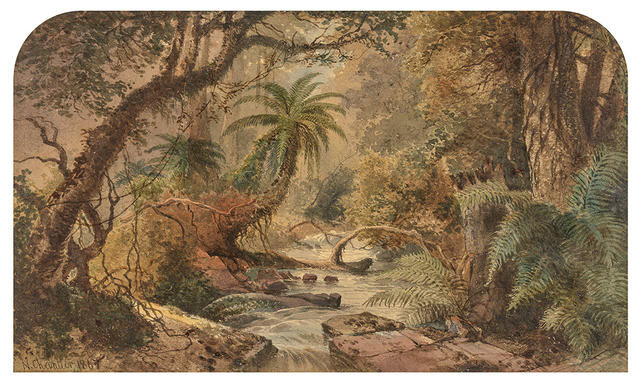Nicholas Chevalier
Russia / Australia / England, b.1828, d.1902
Read more about this artist on WikipediaPigeon Bay Creek, Banks Peninsula, N.Z.
- 1867
- Watercolour
- Purchased 2006
- 515 x 640mm
- 2006/025
- View on google maps
Location: Sir Robertson and Lady Stewart Gallery
Tags: bush (wilderness), ferns, forests (cultural landscapes), landscapes (representations), natural landscapes, rivers, streams, trees
About the artist
Chevalier, Nicholas (1828-1902)
Born in St Petersburg, Russia to a Swiss mother and Russian father. Worked in London 1851-2. Studied in Rome 1854. To Australia 1855. Visited New Zealand in 1865 and returned to England in 1869 where he spent the rest of his life.
Read more about this artist on WikipediaWakaroa on Horomaka Banks Peninsula is thought to have been given its English name of Pigeon Bay by early whalers who saw and heard the many kererū that once inhabited its large stands of native bush and forest. The bay offered safe anchorage, abundant food and easily accessible timber for both Māori and Pākehā. One of the first professional artists to visit Waitaha Canterbury, Nicholas Chevalier spent several weeks sketching in this location in the early autumn of 1866. This intricately worked view of a forest creek reveals the qualities that distinguished the Aotearoa New Zealand kahere from the forests he knew in Europe: the lush interlacing of trees, ferns, creepers and mosses extending from canopy to floor.
kererū ~ wood pigeons
Pākehā ~ New Zealanders of European descent
kahere ~ forest
(He Kapuka Oneone – A Handful of Soil, 2025)
See the pencil sketch of the same scene in the collection of Te Papa.
See the engraving of the same scene at the Alexander Turnbull Library.
Exhibition History
Pickaxes and shovels, 17 February – 5 August 2018
Richard Oliver, as commander of HMS Fly, visited Banks Peninsula several times between 1848 and 1850. In the following account, Oliver conveys just how magnificent the native forests that once covered much of the peninsula were, and how difficult to navigate on foot. People at home [England] who have never seen a wild forest country, can form no idea of a New Zealand wood. The trees are magnificent – so closely packed and interlaced with supplejacks and innumerable creepers and parasites as almost to shut out the view of the sky, while the ground is covered with thick underwood shrubs – ferns, moss, lichens abound. You may sit down and, without rising from where you have seated yourself, pick innumerable specimens of the species that I have mentioned and probably many more with which I am unacquainted. But then the per contra comes of the exceeding fatigue and tiresome interruptions that every step brings with it. Your hat is knocked off by a long supplejack rope stretchingacross from tree to tree while your legs are caught by the same obstruction. The view also is exceedingly circumscribed – no distance or middle ground is visible, but huge boles are your constant foreground, some young and flourishing, others in the last stage of decay, interspersed with the graceful tree fern.
Picturing the Peninsula (21 April - 22 July 2007
One of the largest bays on Banks Peninsula, Pigeon Bay / Wakaroa is thought to have been named by early whalers after the large number of wood pigeons (Kereru) which once inhabited the bay. As is seen in Chevalier’s watercolour the bay contained large stands of virgin native bush. With its abundance of timber, favourable anchorage and fertile soils Pigeon Bay was considered one of the gems of the Peninsula by early European settlers.
Nicholas Chevalier spent several weeks sketching at Pigeon Bay and Akaroa Harbour in March and April of 1866. Pigeon Bay is a perceptive study of the dense native bush that once covered much of Banks Peninsula.







